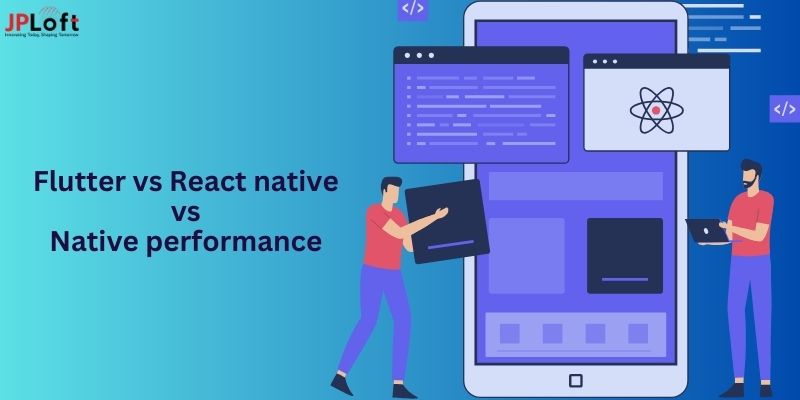Native applications are all about high performance that are built for specific platforms and written in languages that the platform friendly. This is what makes the cross-platform mobile app small, with the added benefit of allowing multiple users to access your product or service. Both Flutter and Ionic share a common vision of creating beautiful and high-performance apps that work on every platform However, both are inherently different. It is very important to connect an Ionic Mobile App Development company or company expert in Flutter to gain the advantage. Given below is a quick comparison between Flutter and Ionic.
What is Ionic?
Ionic is an open-source that provides a comprehensive library of mobile and desktop-optimized HTML, CSS and JS components for creating highly intuitive and interactive apps. The ionic framework can create hybrid mobile applications for cross-platforms like iOS or Android.
Also Read: Angular JS Vs Node JS: Full Comparison
It features UI components and a rich library of front-end building blocks that allow the user to create a beautiful design, high-performance, and progressive mobile applications with scripting languages such as JavaScript, HTML, and CSS.
Advantages and Disadvantages of Ionic
| Advantages | Disadvantages |
| Allows for rapid prototyping | Not suitable for high performance or UI intensive apps |
| Hybrid mobile | Not meant for game development |
| It's angular JS |
What is Flutter?
Flutter is a mobile app SDK, which is used to help developers and designers build modern mobile apps for Android and iOS. Google Flutter is a game-changer when it comes to delivering first-rate native experiences. Flutter is growing in popularity and often compared with React Native and other best cross-platform app development tools. Flutter is a user interface software development kit to develop mobile applications using a single code Dart. On Android, it is integrated with the inbuilt Java Code and while on iOS, it is integrated with Objective C and Swift.
Advantages and Disadvantages of Flutter
| Advantages | Disadvantages |
| Hot Reload | Need to learn Dart |
| Performance | Lack of community support |
| Backed by Google | Lack of promotion |
| Compiled into Native C | Lack of friendly documentation |
Architecture And Execution Of Code:Flutter:
Flutter offers high performance because it uses Dart language which is advanced, compatible, and comprehensive language.
Also Read: Java Vs Kotlin: Which Is Best For Your Android App?
Flutter’s engine connects with platform-specific SDKs which gives developers a modern, reactive, and a rich set of features that can be leveraged to create beautiful mobile experiences.
Ionic: One codebase, any platform, this gives developers a significant benefit of code reusability. Ionic’s powerful features and strong community support help developers to build highly-interactive apps in no time. You can also use Ionic with React, Vue, Angular, or JavaScript.
Comparison of Flutter and Ionic
| Features | Flutter | Ionic |
| Language(s) | Dart | HTML, CSS, JavaScript |
| Runtime | Custom graphics engine | Web browser |
| UI elements | Proprietary Widgets | Standards-based Web Components |
| Native API access | Native plugin library, using Flutter native packages | Native plugin library, using Cordova and Capacitor |
| Offline access | Yes | Yes |
| Mobile performance | Excellent | Very Good |
| Web performance | Poor | Excellent |
| Deployment options | Mobile, Desktop, Web | Mobile, Desktop, Web, PWA |
Top 7 Attributes of Flutter and Ionic
To decide which one is better for Cross-Platform Mobile App Development, I have listed top 7 Attributes.
| Attributes | Flutter | Ionic |
| The Language Stack | It uses Dart to develop high-quality applications for Android, iOS, and the web. | It uses HTML5, CSS, and JavaScript to develop and run applications, and requires Cordova to access native platform controllers. |
| Performance | It uses Dart and there is no JavaScript bridge for starting interactions with the device native components, due to which the performance is amazing. | It utilizes web technologies to render an application. This approach significantly decreases the speed. So the performance is not upto the mark. |
| User Interface | Flutter provides the best User Interfaces. | Ionic UI renders everything in HTML and CSS. To give native mobile experience, it applies Cordova. |
| Market and Community | Flutter is a new framework for the community right now and not very popular. | After React, it is the second most popular framework. It empowers developers to build native mobile apps in the fastest possible way. |
| Code Sharing | In Flutter, we need to add dedicated files for both Android and iOS platforms depending upon their rules. | Whatever the OS has given, they will work similarly well on every one of them. |
| Popular Apps | JustWatch, Pacifica, Nationwide and many more. | Hamilton |
| Pricing | Engineers can utilize these systems and their libraries for free. | It is a free open-source framework for developing cross-platform mobile applications. But, there is also a Pro version which is paid. |
Finally Several key factors play an important role while deciding a framework for your cross-platform app development. You need to consider several factors such as budget, time, application size, platforms, and so on. We see mixed results.
- Flutter:
- Awesome reusability.
- The widgets don’t adapt to the underlying platform, instead by default you use Material Design on both platforms.
- The Flutter team is providing more and more iOS-styled components.
- You can find out on which platform you’re running and you can manually swap widgets but that's a bit more work than required by Ionic.
- If you need platform-specific re-styling, you can move the position of Flutter on the slider further to the right.
- Ionic:
- Awesome reusability!
- The “wrapped web app” concept ensures that you can easily re-use your code - you’re just building a wrapped web app in the end.
- The huge component library of adaptive components (i.e. automatically styled for the platform the app runs on) also helps.








